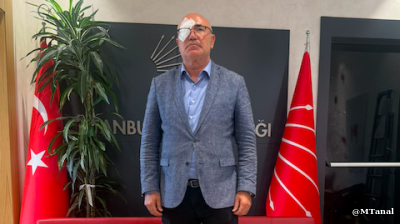Central Asian migrants are increasingly being punished by a Russian paradox in which the government continues tightening restrictions on foreign workers despite a dire labour shortage.
The latest step to limit the influx of guest workers is a draft resolution prepared earlier this summer by Russia’s Labour Ministry to introduce stricter quotas starting in 2026 on foreign workers in a variety of economic sectors. The new rules would formalise on the federal level restrictions that are already in place in many Russian regions. The affected sectors include public catering (i.e. restaurants and cafes), construction, the retailing of alcohol and tobacco, agriculture and logging.
The tightening of quotas comes on the heels of anti-migrant measures imposed earlier in 2025 that make it easier for Russian authorities to monitor guest workers’ movements and fast-track deportations. There are also city-level changes. For example, in St Petersburg, foreign workers from non-Eurasian Economic Union (EEU) member states, including Tajiks and Uzbeks, are now prohibited from working in transport-sector jobs, including taxis and food delivery services.
Central Asian labour migrants have been hit the hardest by the changes, given that they make up roughly 10.5mn of Russia’s estimated 12-14mn migrant workers.
Ultimately, Russia may be creating more problems than it is solving by tightening restrictions on foreign workers. Russia has long grappled with a “deepening demographic crisis,” which damages the country’s long-term economic stability, a problem exacerbated by the war in Ukraine. Russia’s labour minister estimated the country could have a labour shortage of around 11mn workers by 2030, Business Insider reported.
Many of the sectors covered by the new quotas are traditionally migrant-labour dependent and are already grappling with worker shortages. One such sector, construction, would see the foreign worker quota reduced to 50% from the present 80%.
Lydia Kataskina, HR director at Glavstroy, which bills itself as one of Russia’s largest developers, told the Reuters news agency that labour shortages have pushed construction costs higher, while causing delays and quality-control problems.
The restrictions on foreign workers are primarily a governmental response to public pressure. Central Asian guest workers have long dealt with hostile attitudes among Russians. But outward expressions of prejudice surged following the March 2024 terrorist attack on the Crocus City Hall concert venue in Moscow; four Tajik nationals were implicated as the perpetrators of the attack, which left over 140 concert-goers dead.
The terrorist tragedy prompted Russian authorities to review immigration policies and launch a wave of raids, deportations, and restrictions. Citizens also engaged in vigilante action, with over 700 reports of attacks on migrants across Russia in the days following the Crocus City Hall incident.
The consequences of these policies are not limited to distant fields and construction sites but can be felt by Russians in their everyday life. For example, a shortage of drivers in St Petersburg as a consequence of the guest-worker ban means the cost of hailing a ride and ordering food delivery is getting more expensive, or resulting in longer wait times.
In response to the tightening labour migration rules, as well as reports of ongoing harassment of migrants, some Central Asian governments, notably Kyrgyzstan and Tajikistan, have urged their citizens to think twice about going to Russia in search of work. Uzbekistan, meanwhile, has launched job-training initiatives designed to steer would-be Russia-bound labour migrants to higher-skill opportunities elsewhere.
Despite the new rules, Russia remains a popular destination for hundreds of thousands of Central Asian migrants seeking low-skill work. An International Organization for Migration report in 2025, for example, showed that the number of Tajik nationals heading to Russia experienced only a slight decline during the first nine months of 2024, compared to the same period the previous year. At the same time, the value of remittances sent home by Tajik labour migrants increased year-on-year by 27% in 2024, reaching $5.8bn, according to World Bank data.
It remains unlikely that there will be a tectonic shift in Central Asian migration patterns soon. But given the current trends, everyone suffers. Bruce Pannier, Central Asia Fellow in the Eurasia Program at the Foreign Policy Research Institute, explains “without these migrant workers a huge part of the Russian economy is finding itself without a sufficient work force to continue operating, or at least operating at levels that Russia needs.”
Labour migrants are set to experience more hardship as they struggle to scratch out a living for themselves and their loved ones back home, and Russians will begin to feel the consequences of these policies in their day-to-day life.
The Russian government is proving to be its own worst enemy on migration matters, adopting measures that undermine its extensive efforts to insulate much of the population from the cost of its massive war effort.
Katherine Spencer is a program assistant at the Atlantic Council’s Eurasia Center. Prior to joining the Atlantic Council, she interned at the American Enterprise Institute, where she focused on domestic developments in Russia and Russia’s war against Ukraine.
This article first appeared on Eurasianet here.
Opinion

COMMENT: France’s instability risks weakening Europe at a critical moment
The French government fell on September 8, facing a 5.8% of GDP budget deficit it can neither fund nor reduce, plunging the Fifth Republic into yet another crisis at a critical time for Europe.

BEYOND THE BOSPOROS: Ozel, the opposition “genius” who keeps playing right into Erdogan’s hands
CHP leader can call congresses, “move the HQ” and appeal to the courts all he likes. There’s just one problem – there is no law in Turkey.

COMMENT: Putin’s pivot to China cements Russia’s vassalage to Beijing
When Donald Trump declared that Joe Biden had made the “unthinkable” mistake of pushing Moscow into Beijing’s arms, the US president suggested their partnership was inherently fragile.

ING: Czech industry joins the growth pack
Industrial output accelerated in July, beating market expectations. Robust gains were recorded in key segments of manufacturing, suggesting the onset of a broad-based recovery.




